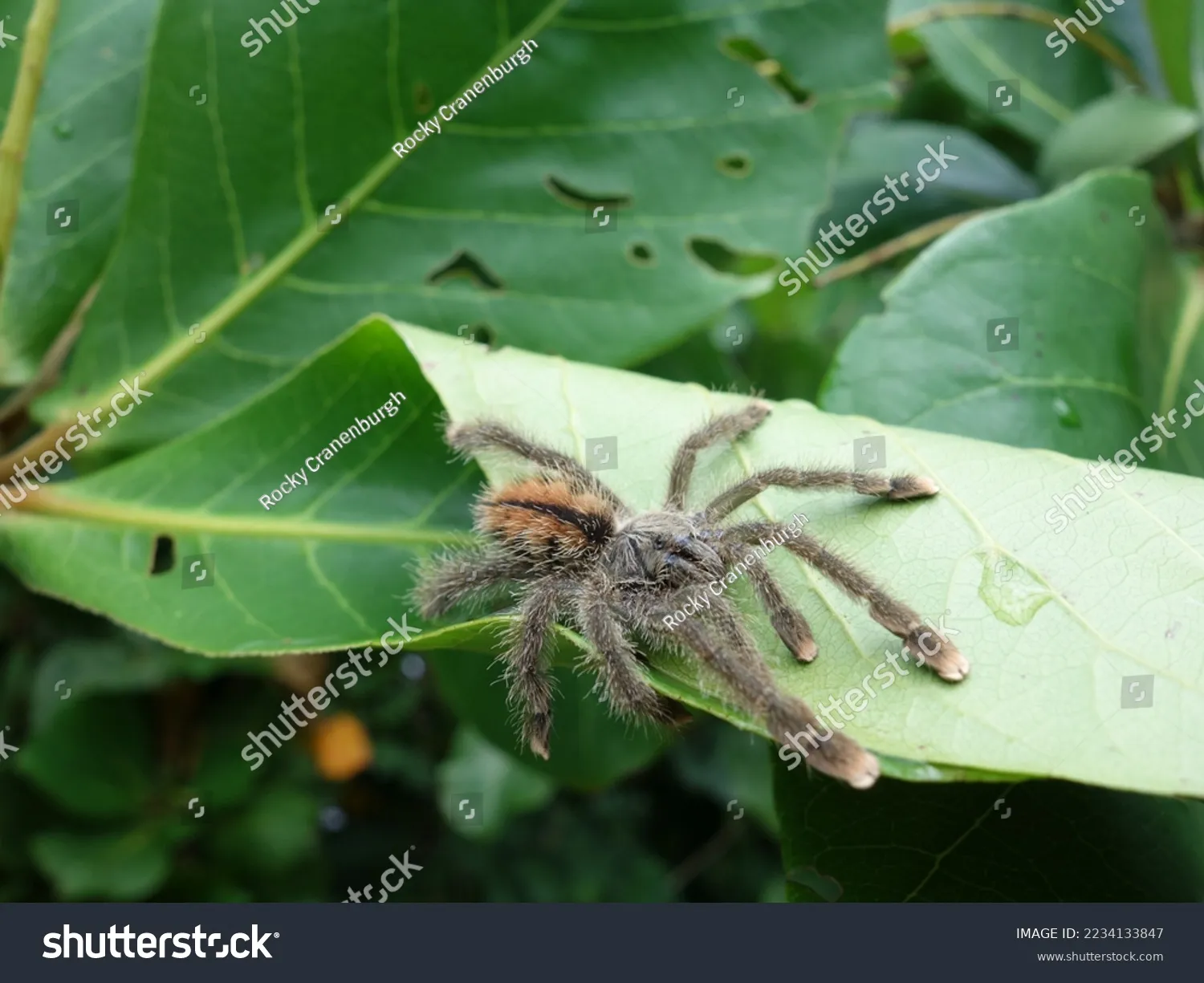What are Arboreal Tarantulas?
Arboreal tarantulas are a fascinating group of spiders, captivating enthusiasts with their vibrant colors, unique behaviors, and arboreal lifestyles. Unlike their terrestrial cousins, these spiders have adapted to living primarily in trees, shrubs, and other elevated habitats. Their bodies are often equipped with specialized adaptations for climbing and navigating their vertical world. They are a great addition to any spider enthusiast’s collection. Learning about these spiders is a fulfilling hobby, giving you an understanding of nature and wildlife.
Characteristics of Arboreal Tarantulas
Several characteristics set arboreal tarantulas apart. Their legs tend to be longer and more slender than those of terrestrial species, allowing them to move quickly and efficiently across branches and vertical surfaces. Many species have modified tarsal claws that provide excellent grip. Their abdomens often exhibit a lighter coloration compared to the rest of their bodies, which helps them blend into their surroundings. Arboreal tarantulas typically construct silken retreats or nests in the crevices of trees or under the bark. These spiders are ambush predators, lying in wait for unsuspecting prey to come within striking distance.
Top 5 Amazing Arboreal Tarantula Species
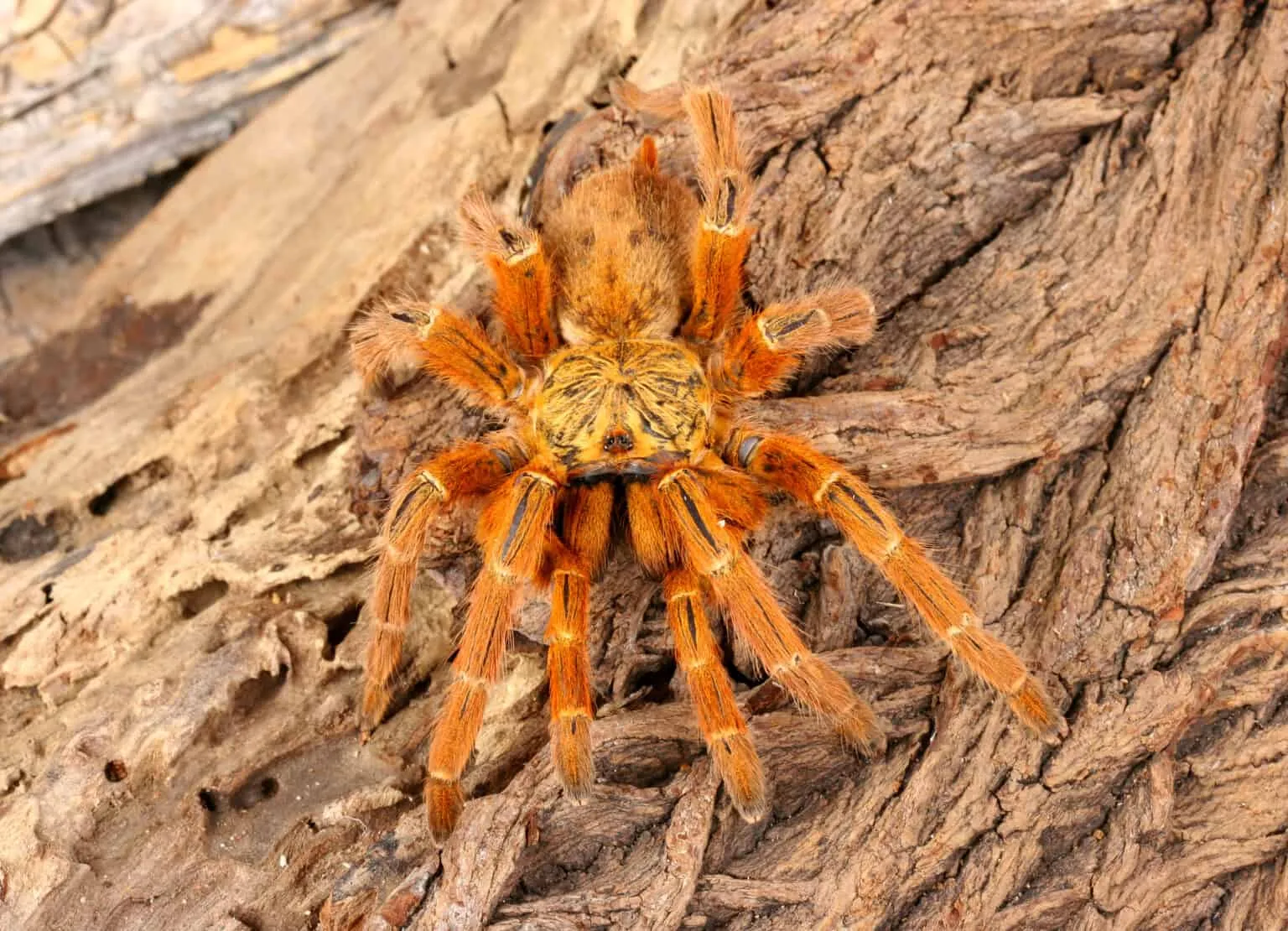
Here is a list of the top 5 amazing arboreal tarantula species. Each species has unique characteristics that make them fascinating to observe and keep as pets.
The Greenbottle Blue (Chromatopelma cyaneopubescens)
The Greenbottle Blue tarantula is a stunning species known for its vibrant coloration, making it a favorite among hobbyists. They are a medium-sized tarantula, with females reaching up to 6 inches in leg span. The Greenbottle Blue is known for its beautiful metallic blue legs and a carapace that shimmers with hues of green and gold. Their abdomen is a mix of orange and brown. Native to the dry scrublands of Trinidad and Tobago, these spiders are arboreal, typically constructing silk retreats in bushes and low trees.
Appearance and Habitat of Greenbottle Blue
The Greenbottle Blue boasts a striking appearance, with adults showcasing a vibrant mix of colors. Their carapace displays metallic green or gold, while the legs are a brilliant blue. The abdomen often exhibits a reddish-orange hue, completing its eye-catching look. In their natural habitat, they reside in dry, scrubby environments, creating silk retreats in bushes and trees. When choosing a habitat, think about recreating a similar type of environment to provide the best care.
Care Requirements for Greenbottle Blue
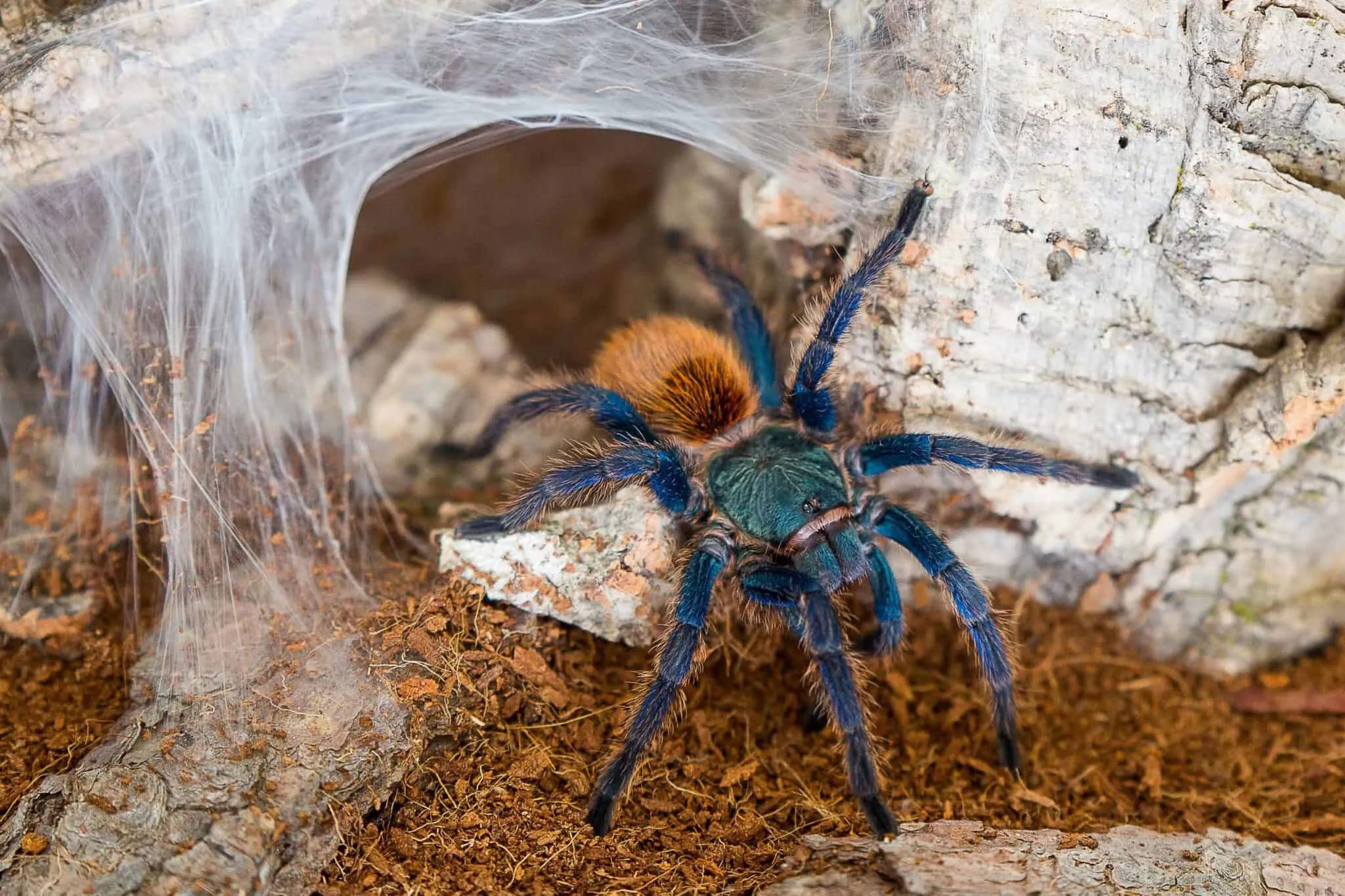
Greenbottle Blues require a habitat that mimics their natural environment. Provide a well-ventilated enclosure with a depth that facilitates climbing. The substrate should be a mix of coconut fiber and sphagnum moss to maintain the necessary humidity. Maintain a temperature between 75-85°F (24-29°C). Offer a shallow water dish and feed them a diet of appropriately sized insects, such as crickets and roaches. Handling should be kept to a minimum as they can be skittish and prone to bolting.
The Pinktoe Tarantula (Avicularia avicularia)
The Pinktoe Tarantula is a popular species, appreciated for its docile nature and stunning appearance. These spiders are medium-sized, with females reaching up to 5-6 inches in leg span. Pinktoe tarantulas have a beautiful appearance, with a dark body and distinctive pink tips on their toes. Native to the rainforests of South America and the Caribbean, they are arboreal, constructing their nests in the trees. These spiders have a pretty unique look that will catch your eye.
Appearance and Habitat of Pinktoe Tarantula
The Pinktoe Tarantula showcases a striking contrast of colors, with a dark body and pink tips on its toes. They typically create silken nests in trees and shrubs, often near water sources. Recreating the habitat is necessary to provide the best care for these types of spiders. Understanding the natural habitat of the species helps create a good environment, which will help your spider thrive in captivity.
Care Requirements for Pinktoe Tarantula
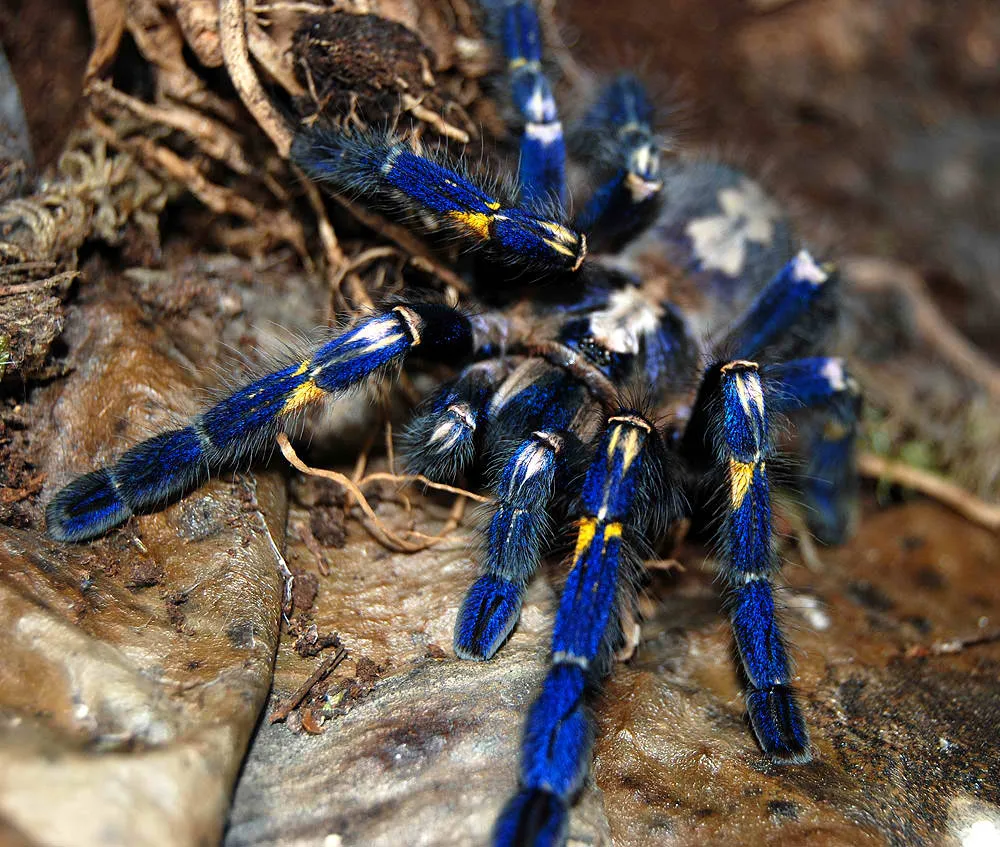
Provide a vertical enclosure that facilitates climbing, with plenty of branches and foliage for web-making. Maintain a temperature between 75-80°F (24-27°C) and a humidity level of 70-80%. Use a substrate mix of coconut fiber and peat moss. Offer a shallow water dish and feed them a diet of appropriately sized insects, such as crickets and fruit flies. Handle with care, as they are relatively fast and can be prone to bolting.
The Antilles Pinktoe Tarantula (Caribena versicolor)
The Antilles Pinktoe Tarantula, also known as the Martinique Pinktoe, is a vibrant and sought-after species. They are a medium-sized tarantula with females reaching up to 5-6 inches in leg span. They are known for their colorful appearance, with metallic green and blue hues on their carapace and legs, and pink tips on their toes. Native to the islands of Martinique and Guadeloupe in the Caribbean, these spiders are arboreal, residing in trees and shrubs.
Appearance and Habitat of Antilles Pinktoe Tarantula
The Antilles Pinktoe exhibits a stunning array of colors, including metallic greens, blues, and pinks. Their habitat includes the trees and shrubs of the Caribbean islands. They often build their nests in the crevices of trees, camouflaging them with silk. They do well in a variety of conditions, making them a favorite among enthusiasts. Providing a habitat that imitates their natural surroundings is key to their care.
Care Requirements for Antilles Pinktoe Tarantula
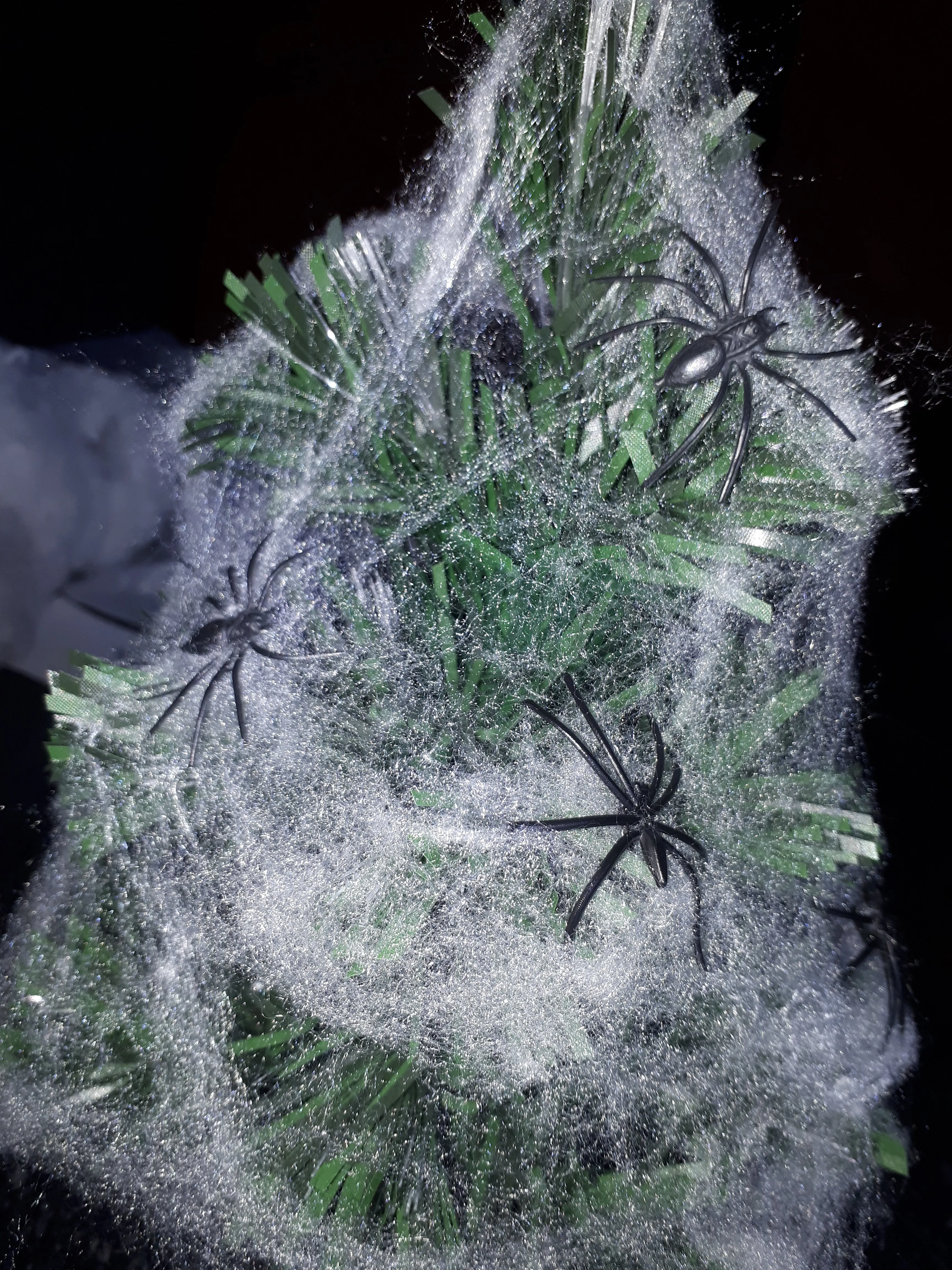
Provide a well-ventilated, vertical enclosure with plenty of climbing space and foliage. Maintain a temperature range of 75-80°F (24-27°C) and a humidity level of 70-80%. Use a substrate mix of coconut fiber, sphagnum moss, and a few branches for the spider to climb. Offer a shallow water dish and feed them a diet of appropriately sized insects. Handle them with care, as they are generally docile but can be quick to move.
The Cobalt Blue Tarantula (Cyaneopubescens)
The Cobalt Blue Tarantula, a striking species, is known for its vibrant metallic blue coloration. They are a medium to large-sized tarantula, with females reaching up to 5-6 inches in leg span. Cobalt Blue tarantulas have a striking appearance, with an overall metallic blue color. They are native to the tropical forests of Southeast Asia, specifically Myanmar, Thailand, and Vietnam. They are a burrowing arboreal species, creating burrows at the base of trees and plants.
Appearance and Habitat of Cobalt Blue Tarantula
The Cobalt Blue Tarantula showcases a stunning, overall metallic blue coloration. They inhabit the tropical forests of Southeast Asia. Unlike many arboreal species, they often create burrows near the base of trees and plants, providing both a home and camouflage. The cobalt blue spider is a beautiful and interesting spider, making them a favorite among enthusiasts.
Care Requirements for Cobalt Blue Tarantula
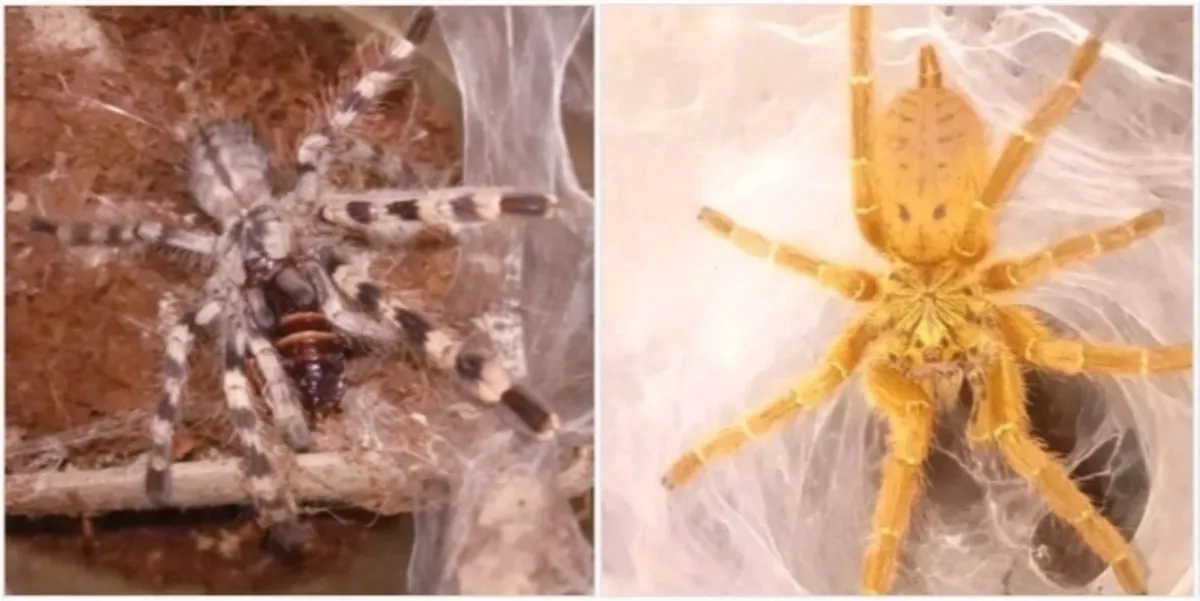
Provide a well-ventilated enclosure with a substrate that allows for burrowing, such as a mix of peat moss, coconut fiber, and vermiculite. Maintain a temperature range of 75-85°F (24-29°C) and a humidity level of 70-80%. Offer a water dish and feed them a diet of appropriately sized insects. Handle them with caution; they are known to be fast and can be defensive.
The Goliath Birdeater (Theraphosa blondi)
The Goliath Birdeater is one of the largest tarantula species in the world, renowned for its impressive size. They are a large tarantula, with females reaching up to 10-12 inches in leg span. Their appearance is characterized by a brown body with reddish hairs. Native to the rainforests of northern South America, they are a terrestrial, but often climb, species, constructing burrows or using existing cavities in the ground. The goliath birdeater is a unique spider, famous for its size.
Appearance and Habitat of Goliath Birdeater
The Goliath Birdeater is known for its massive size and brown coloration. They typically construct burrows or utilize existing cavities. The Goliath Birdeater’s size makes them fascinating to observe. These spiders are a unique and interesting species, popular among enthusiasts.
Care Requirements for Goliath Birdeater
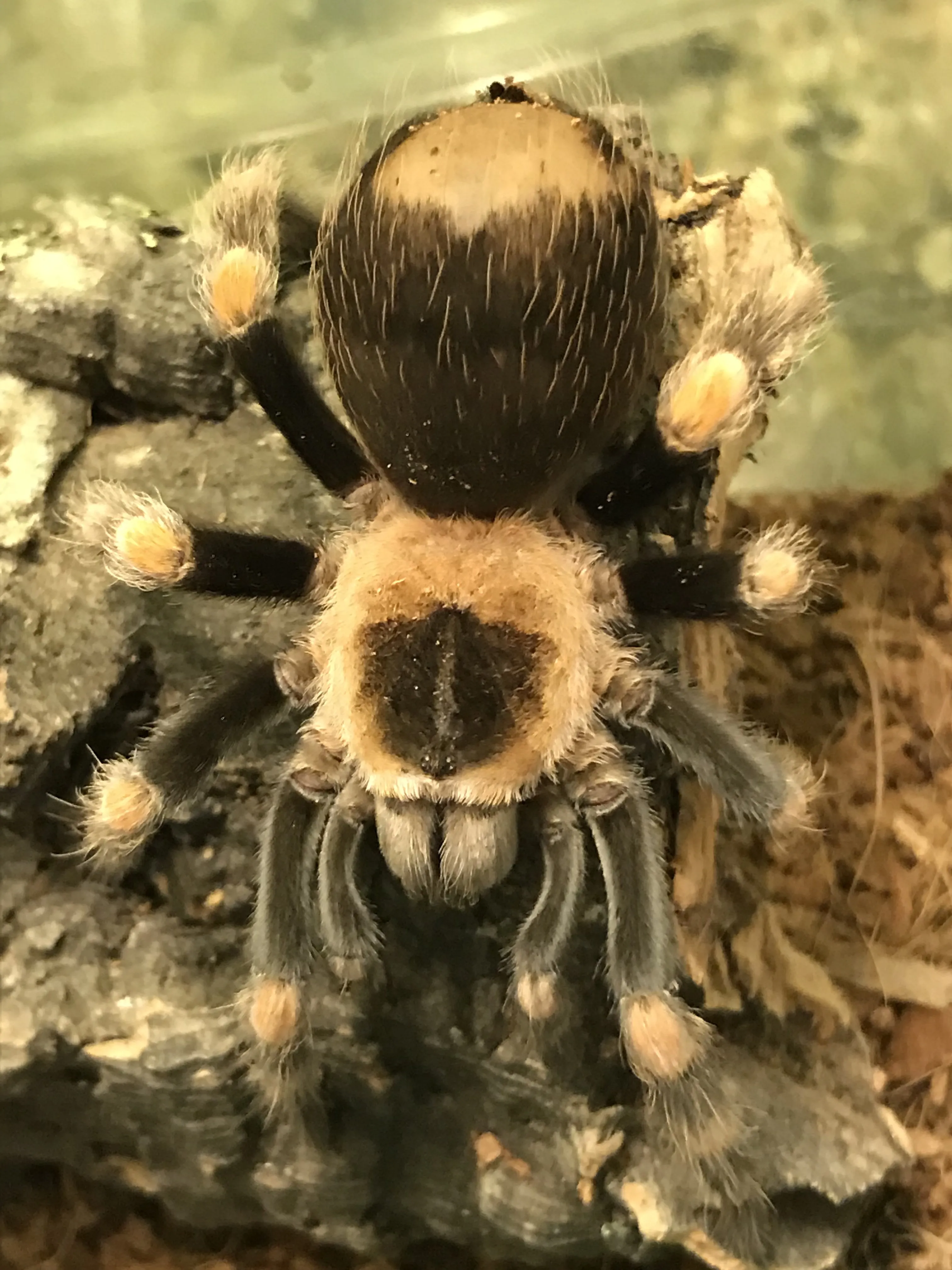
Provide a large enclosure with a deep substrate, such as a mix of peat moss, coconut fiber, and soil, to allow for burrowing. Maintain a temperature range of 75-80°F (24-27°C) and a humidity level of 70-80%. Offer a large water dish and feed them a diet of large insects, such as crickets and roaches, and occasionally small vertebrates. Handle with extreme caution; they are capable of inflicting a painful bite and have urticating hairs.
How to Choose the Right Arboreal Tarantula
Choosing the right arboreal tarantula requires careful consideration of your experience level, the resources available, and the spider’s specific needs.
Considerations for Beginners
Beginners should start with less aggressive and more tolerant species. Pinktoe tarantulas (Avicularia avicularia) and Antilles Pinktoe tarantulas (Caribena versicolor) are generally good choices due to their docile nature. Research their care requirements thoroughly, including habitat setup, feeding, and humidity levels. Don’t be afraid to consult with experienced keepers or online forums for advice.
Considerations for Experienced Keepers
Experienced keepers can handle more challenging species. Cobalt Blue Tarantulas (Cyaneopubescens) are visually stunning but can be defensive. Greenbottle Blues (Chromatopelma cyaneopubescens) offer a more visually stunning species. Ensure you have a good grasp of advanced tarantula care before selecting these species. Consider the availability of food, appropriate enclosure size, and specific humidity requirements.
Essential Equipment and Setup
Setting up a proper habitat is crucial for the health and well-being of your arboreal tarantula. Your setup should create an environment that mimics the spider’s natural habitat.
Enclosure Size and Type
Choose a vertical enclosure that is appropriately sized for the species. A general guideline is to provide an enclosure that is at least twice the tarantula’s leg span in width and three times in height. Glass or acrylic terrariums are common choices, with secure lids and adequate ventilation. The enclosure should be tall to allow the spider to climb and create webs.
Substrate and Decorations
The substrate should retain moisture while allowing for proper drainage and a place to burrow. A mix of coconut fiber, sphagnum moss, and peat moss is often used. Provide branches, cork bark, and artificial or live plants to allow the spider to climb and create webs. These decorations also provide the necessary coverage, mimicking their natural environment.
Feeding and Hydration
Tarantulas need a consistent supply of food and water to thrive. You can find insects at your local pet shop, and they are relatively easy to care for. It is important to create a good feeding schedule to give your spider the best care.
Feeding and Watering Schedule
Feed your tarantula an appropriately sized insect every 1-2 weeks, depending on its age and size. Provide a shallow water dish with fresh water, and mist the enclosure to maintain humidity levels, especially for arboreal species that require higher humidity. Remove uneaten food promptly to prevent mold and mites. A regular watering schedule helps ensure that your spider has access to fresh water at all times.
Health and Safety Tips
Taking care of a tarantula can be an extremely rewarding experience. Follow these safety tips to provide the best care for your spider and yourself.
Common Health Issues
Be aware of common health issues such as dehydration, molting problems, and parasitic mites. Ensure proper humidity levels, maintain a clean enclosure, and provide a varied diet. If you notice any signs of illness, such as lethargy, loss of appetite, or unusual behavior, consult with a veterinarian experienced in exotic pets.
Safe Handling Practices
Avoid handling your tarantula unless absolutely necessary. Tarantulas can be skittish and may bite or flick urticating hairs as a defense mechanism. If you need to handle your spider, do so carefully and close to the ground to prevent falls. Wash your hands thoroughly after handling your tarantula or cleaning its enclosure. Always be aware of the potential dangers of tarantulas and the proper way to care for them.
